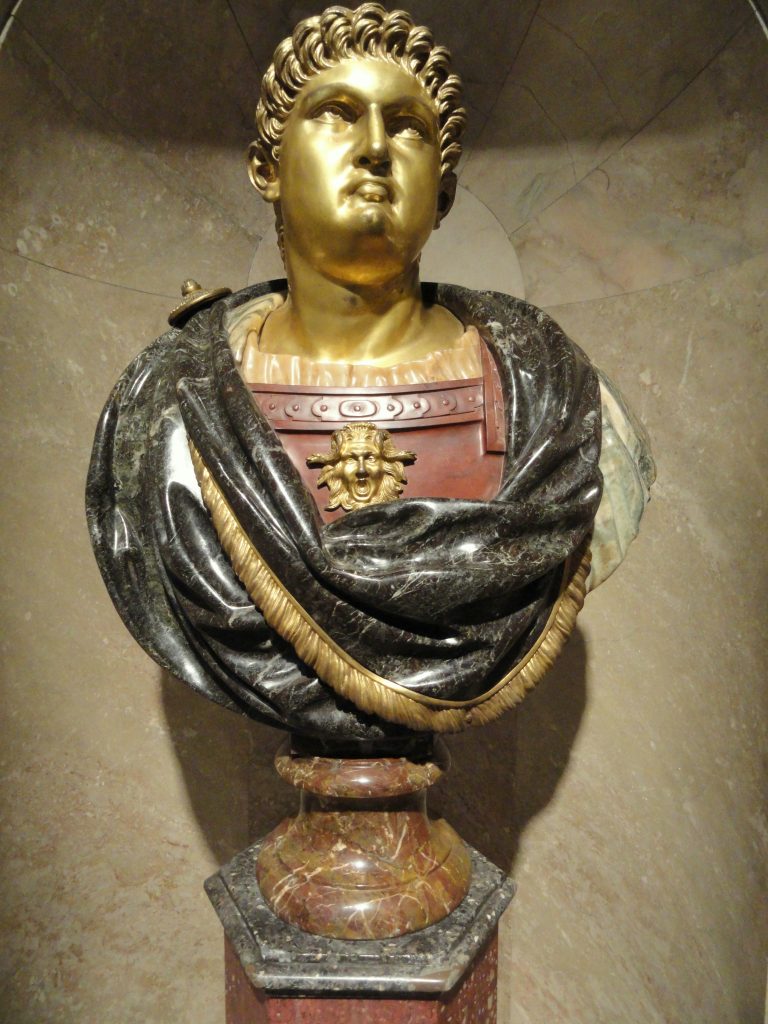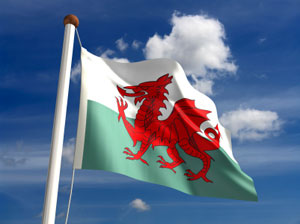
Leeks have been cultivated since the time of the Ancient Egyptians and were probably part of the diet of those who built the pyramids. Hippocrates the ancient Greek physician and ‘father of medicine’ prescribed the leek as a cure for nosebleeds.
The Romans considered the leek a superior vegetable and Emperor Nero got through so many he gained the nickname Porophagus (leek eater); he is reported to have thought that eating leeks would improve his singing voice!
Phoenician traders are said to have introduced the leek to Wales when they were trading for tin in the British Isles – an act that would unexpectedly elevate this humble veg to national status thousands of years later.
Legend has it that in 640AD, the Briton King Cadwallader and his men were engaged in battle with invading Saxons. To distinguish themselves from the enemy, the Welsh wore leeks in their hats – and subsequently gained a great victory over their opponents.
The leek is also associated with the Welsh Saint David. During the Middle Ages when Saint David was alive the leek was seen as a healthy and virtuous plant. Extraordinary qualities were claimed for it. It was the original health food, high in fibre, good for purging the blood, keeping colds at bay and healing wounds.
During this period the leek also acquired mystic virtues. It was claimed that girls who slept with a leek under their pillow on St David’s Day would see their future husband in their dreams.
The humble leek is also mentioned in the Bible. The book of Numbers records how after leaving Egypt, the children of Israel missed a range of foods including leeks.
The leek in Hebrew is called Karti, which is a pun on another Hebrew word yikartu meaning ‘to be cut off’. Thus the Jews eat leeks at Rosh Hashanah to symbolise a wish for their enemies ‘to be cut off’.
Leeks – Welsh National Symbol

Phoenician traders are said o have introduced the leek to Wales when they were trading for tin in the British Isles – an act that would unexpectedly elevate this humble vegetable to national status thousands of years later.
Legend has it that in 640AD, the Briton King Cadwallader and his men were engaged in battle with invading Saxons. To distinguish themselves from the enemy, the Welsh wore leeks in their hats – and subsequently gained a great victory over their opponents.
The leek is also associated with the Welsh Saint David. During the Middle Ages when Saint David was alive the leek was seen as a healthy and virtuous plant. Extraordinary qualities were claimed for it. It was the original health food, high in fibre, good for purging the blood, keeping colds at bay and healing wounds.
During this period the leek also acquired mystic virtues. It was claimed that girls who slept with a leek under their pillow on St David’s Day would see their future husband in their dreams.
A 16th Century reference to the leek as a Welsh emblem is found in the Account Book of Princess Mary Tudor. Earlier still, in the fourteenth century it is known that the feared Welsh archers adopted the green and white colours of the leek for their uniforms, probably at the battle of Crecy.
The leek is worn in the caps of today’s Welsh soldiers every year on St David’s Day. On the same day, in the prestigious Welsh Guards Regiment, a large raw leek has to be eaten by the youngest recruits to the cheers of comrades. The green and white plume worn in the ‘Bearskin’ hats of the Guards also identifies them as belonging to a Welsh Regiment. According to tradition, the 600 soldiers of The Royal Welsh regiment are worked with ‘gunfire’ – tea laced with rum – served by senior ranks and officers on St David’s Day.
Leeks – International Dishes
France
Leeks are a staple food for the country people of Northern France. The Potager is the traditional soup made from garden vegetables and forming part of the evening meal and leeks are key ingredients.
Italy
Modern day Italians bake blanched leeks in cream or braise them with a little dripping, a pinch of sugar and mixed herbs.
Both the Italians and French are fond of leeks a la Grecque: braised in olive oil and white wine with coriander seeds and bay leaves.
Belgium
The Belgians put cooked leeks into a delicious pie they call Flamiche.
Scotland
The Scots combine leeks with chopped chicken in their native Cock-a-leekie soup.
Spain
The Catalans celebrate the coming of Spring with a thin, fine version of the leek, close to a giant spring onion, called a Calcot, grilled over an open fire outdoors.
United States
One of the best-known leek dishes, Vichyssoise, was created by a French chef on American shores. Louis Diat chef at New York’s Ritz Carlton Hotel at the turn of the century, created the well-known dish based on a traditional recipe used by his mother and named it after his home town Vichy.
